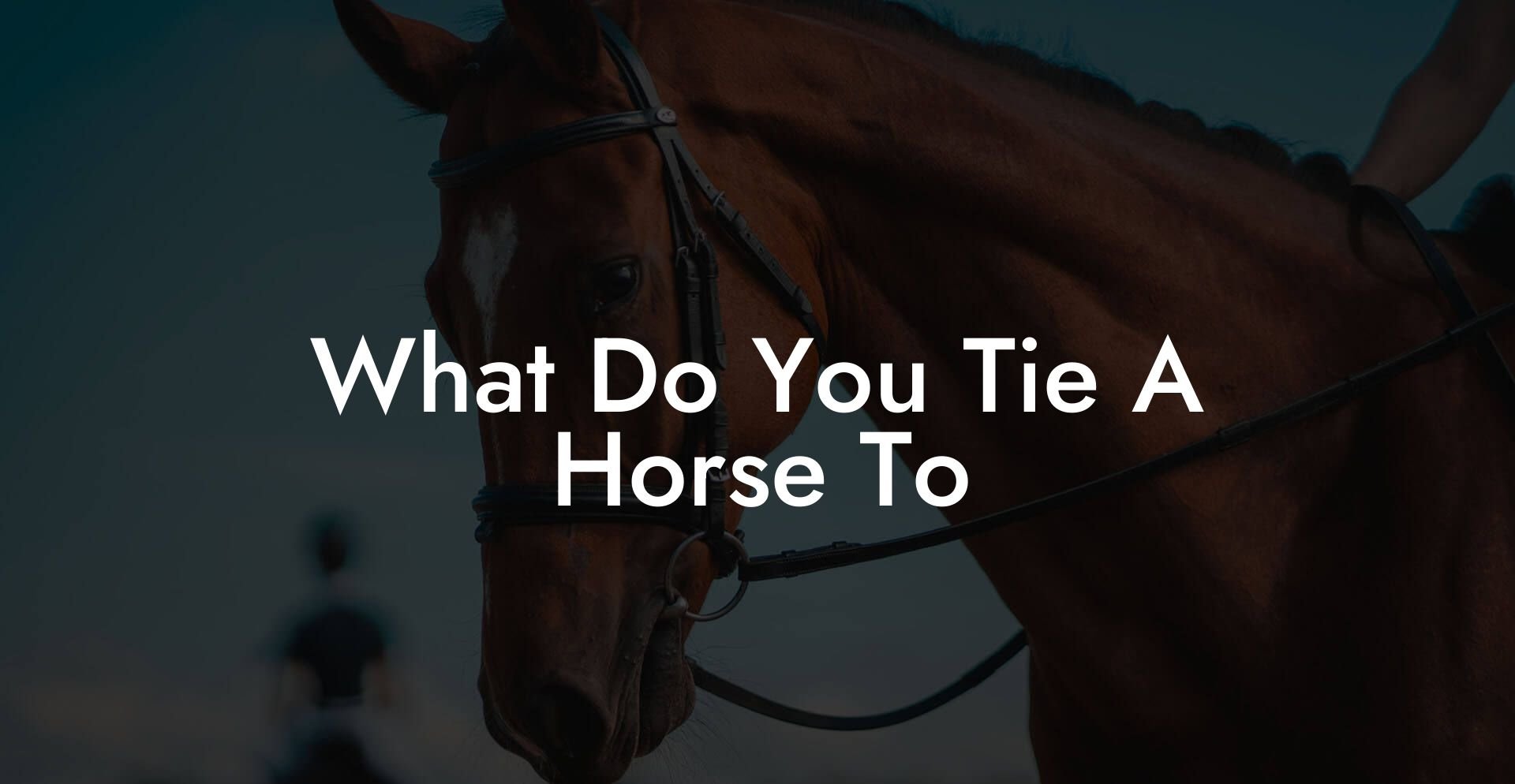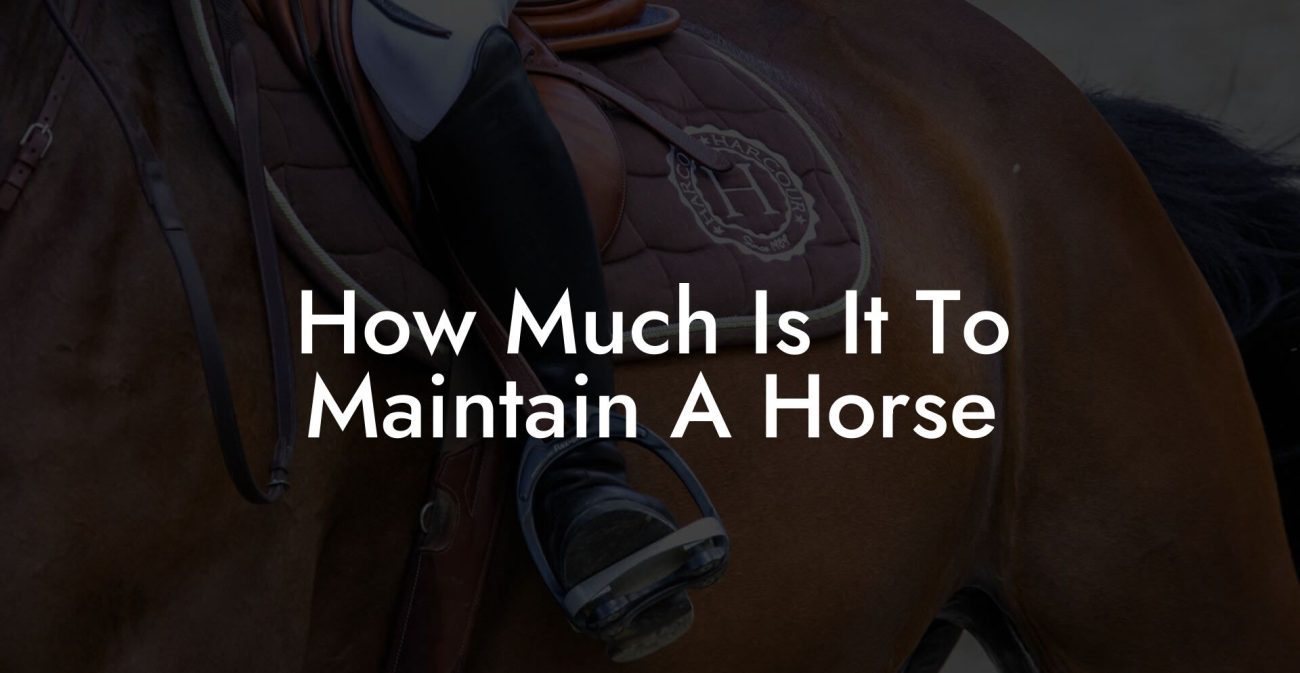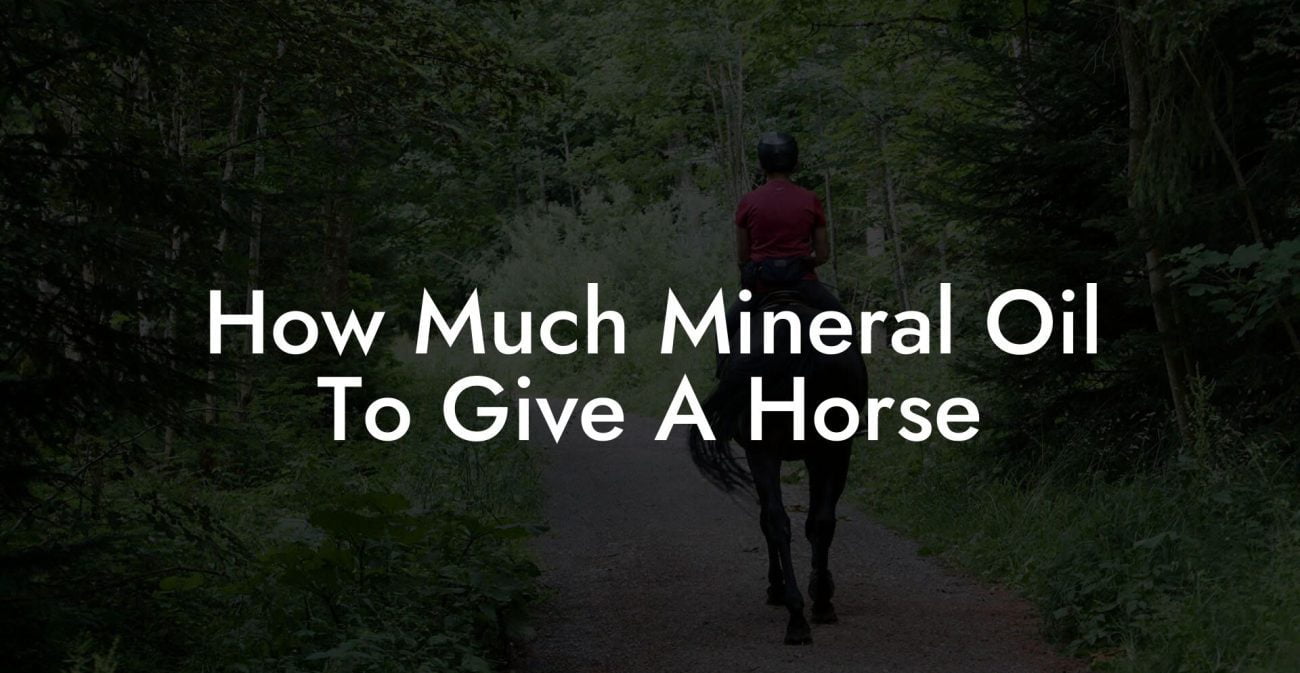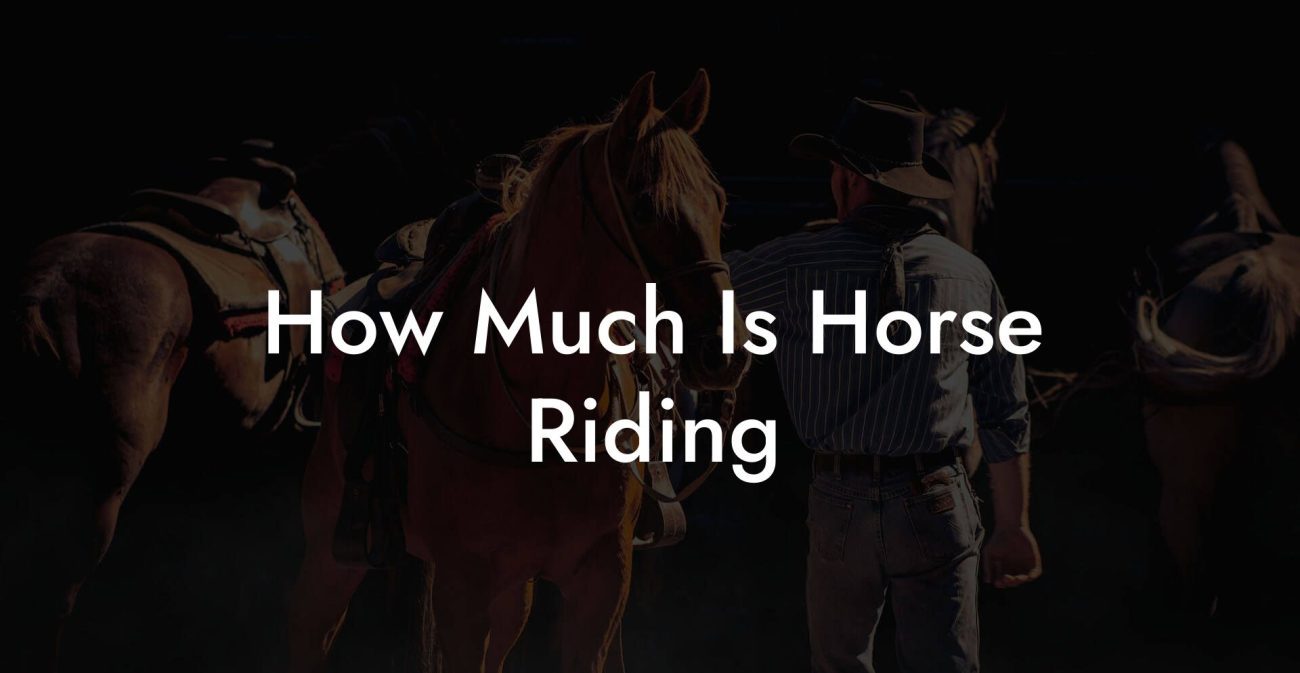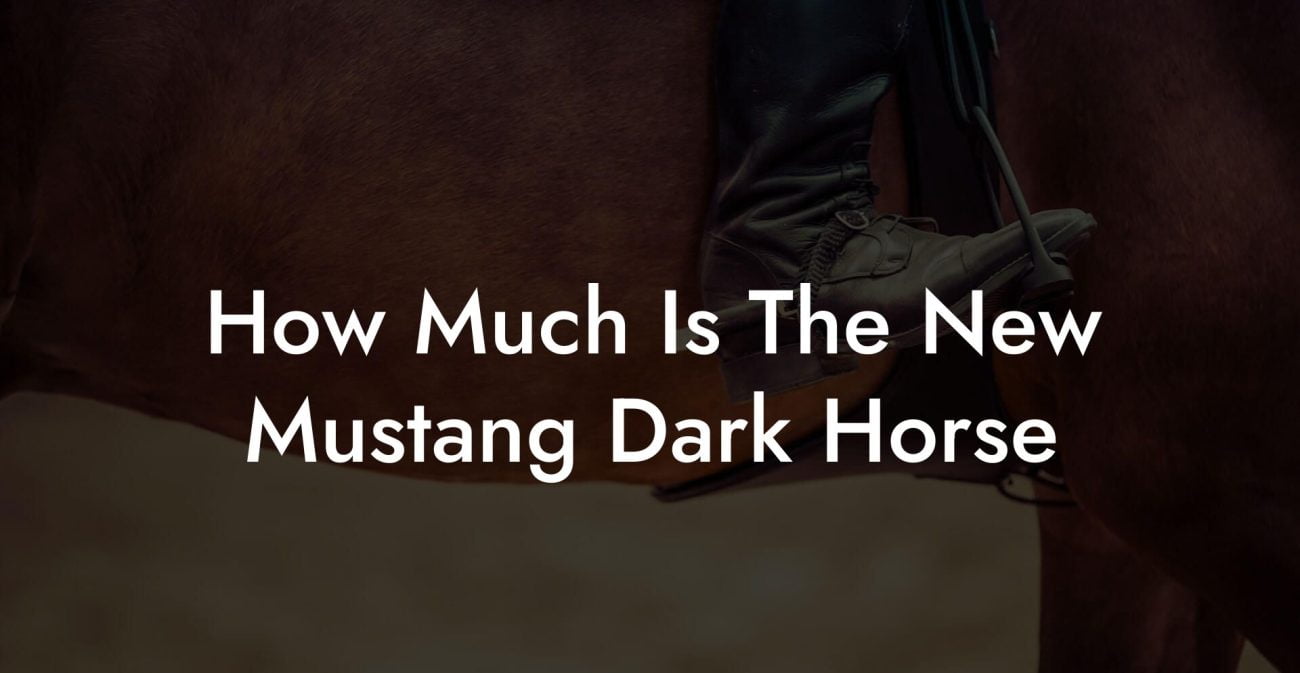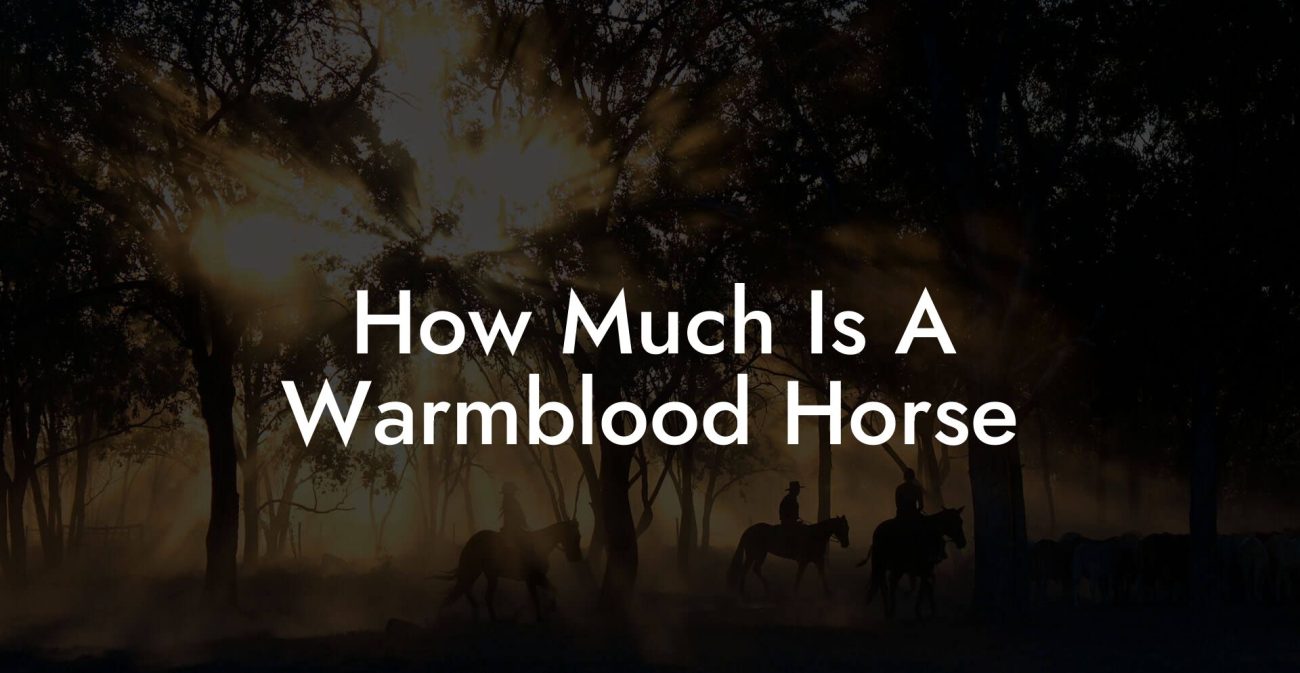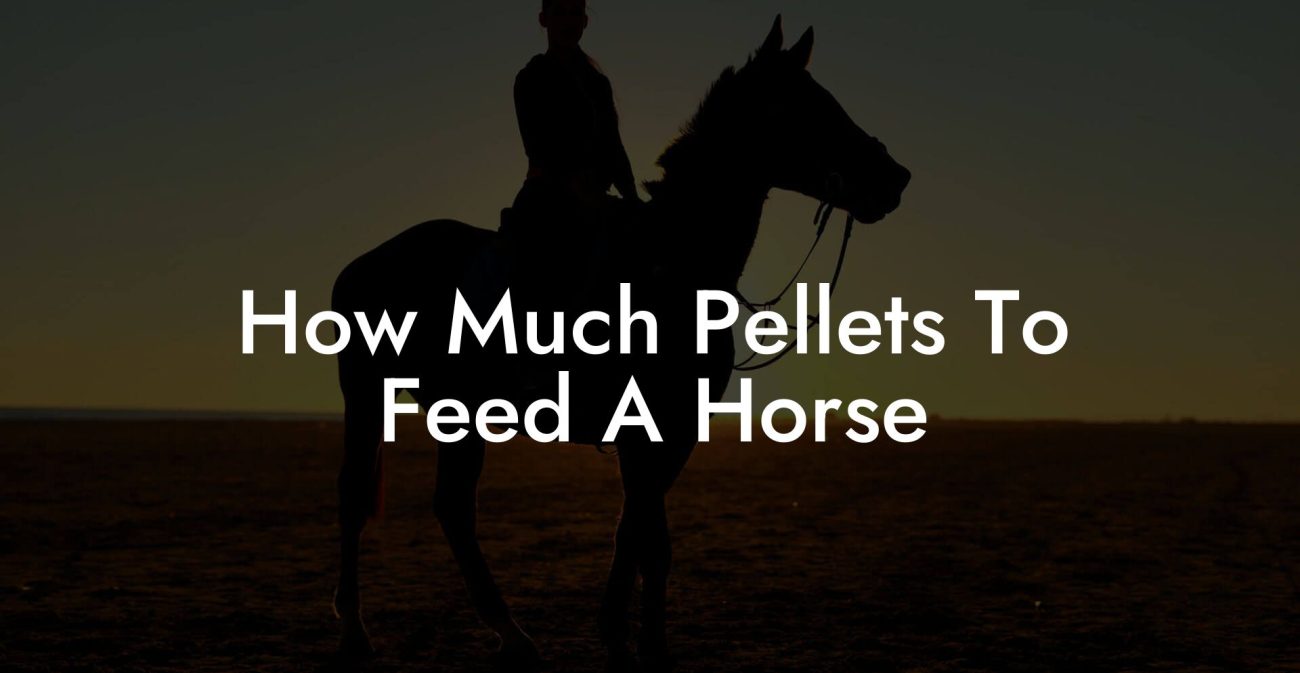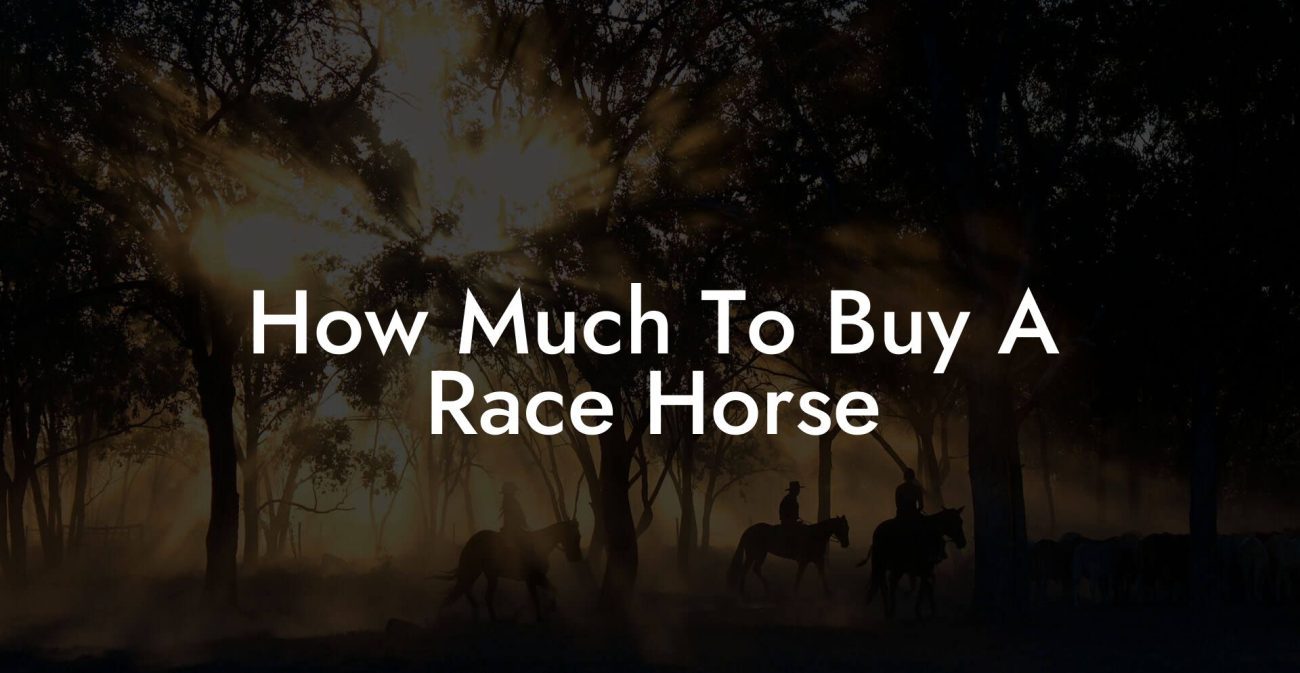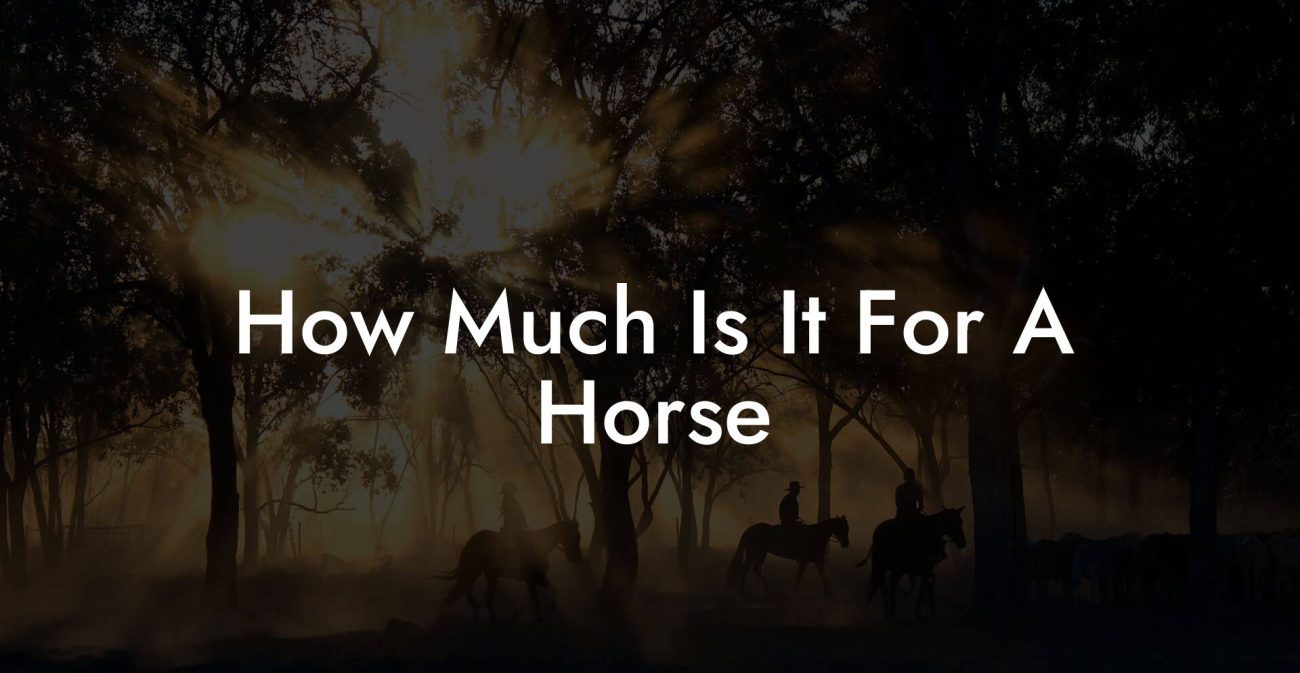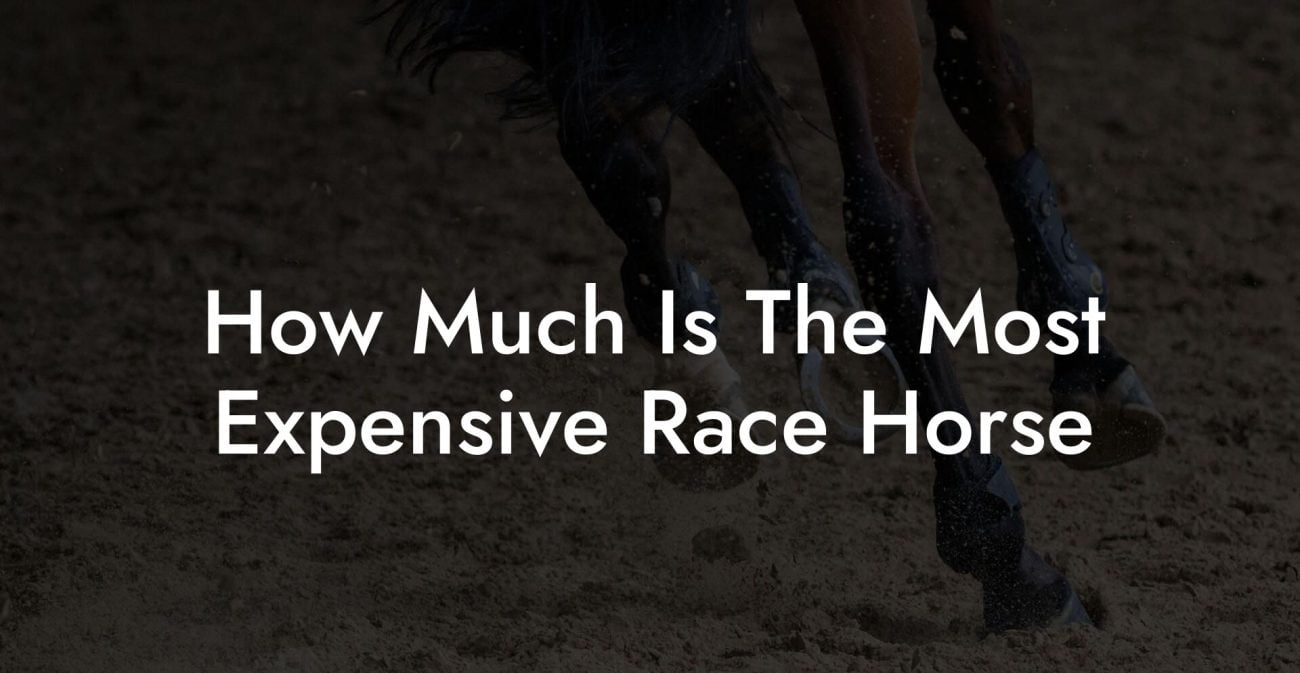Ever wondered what you tie a horse to when you’re not just “letting it roam free” on your Instagram farm? Whether you’re a first-time equine enthusiast or a budding TikTok cowboy looking to elevate your #HorseCare game, the art of tying a horse securely (and safely) is one of those underrated skills that every modern horse owner should master. Get ready to explore everything from the history of horse tying to the latest innovative equipment that makes your life easier – all while keeping your four-legged friend as happy as a llama at a dance party.
Quick Links to Useful Sections
- Unlocking the Mystique: What Do You Tie a Horse To?
- Horse Behavior 101: Understanding the Equine Mind
- The Safety First Approach: What Makes a Good Tying Spot?
- Exploring Tying Equipment: From Old-School Ropes to Modern Innovations
- Traditional Ropes
- Quick-Release Knots and Devices
- Adjustable Tie Lines
- Crafted Tie Rings
- A Step-by-Step Guide to Tying Your Horse Like a Pro
- Step 1: Choose the Perfect Spot
- Step 2: Select the Right Equipment
- Step 3: Engage Your Horse
- Step 4: Secure the Tie
- Step 5: Test the Setup
- Step 6: Monitor and Adjust
- Common Pitfalls and How to Dodge Them
- Maintenance 101: Caring for Your Tying Equipment
- Inspect Regularly
- Clean and Condition
- Store Properly
- Modern Alternatives: To Tie or Not to Tie?
- Beyond the Basics: Tips and Tricks for the Modern Horse Owner
- Resources and Community Support: Your Next Steps
- FAQs: Everything You’ve Ever Wanted to Know About Tying a Horse
- The Modern Equine Experience: Beyond Tying and Toward a Lifestyle
- Your Pathway to Empowering Horse Care
Unlocking the Mystique: What Do You Tie a Horse To?
In the wild world of equine care, tying your horse isn’t just about finding any old tree or fence post. It’s about creating a safe haven where your majestic steed can rest, graze, and roam (within limits) without risking injury or chaos in your barn. Yes, you read that right – a carefully chosen anchor point can be the difference between a chill afternoon and a runaway rodeo.
So, what are the top spots and setups for securing your horse? The answer lies in understanding your horse’s behavior, the environment of your stable, and the multitude of options available in the modern marketplace for tying and tethering. From rugged wooden posts to sleek modern tie rings, we’re diving into every detail you need.
For the Gen-Z and millennial equestrians out there, consider this your ultimate guide to mastering the art of horse tie-ups – blending traditional wisdom with fresh ideas and high-tech tips for a hassle-free, safe, and stylish horse care routine.
Horse Behavior 101: Understanding the Equine Mind
Before you even think about tying your horse to anything, it’s crucial to understand what makes horses tick. These intelligent, graceful animals have survived for millennia by relying on their instincts, social bonds, and acute awareness of their surroundings.
Trust and Social Structure: Horses are social creatures that thrive on routine and trust. When you’re preparing to tie your horse, you’re not just securing an animal – you’re engaging in a ritual that reinforces the bond between you and your horse. A calm and confident approach will set the tone, ensuring your horse feels secure rather than confined.
Flight Response: Ever heard the phrase “live free or die”? Well, horses take that literally. Their natural instinct is to flee from perceived danger. That’s why the tying point and the method you choose should always be designed to prevent any panic-induced stampedes. The right set-up minimizes risks by ensuring your horse always has a sense of space and security.
Comfort Over Confinement: Horses tend to get stressed in confined spaces. Using simple tools like padded ropes and well-placed tie rings can help reduce stress levels, making the tethering process a positive experience rather than a chaotic ordeal. Remember, a happy horse is a well-behaved horse!
The Safety First Approach: What Makes a Good Tying Spot?
When choosing an anchor point to tie your horse to, safety isn’t just a buzzword – it’s the foundation of every successful tie-up. Let’s break down the critical factors that every modern horse owner must consider:
- Structure Strength: The post, tree, or designated tie ring should be robust enough to handle the force of a pulling horse. Look for materials that are weather-resistant and durable, think solid wood, metal, or reinforced concrete.
- Accessibility and Location: Choose a spot that’s easily visible and within your working range. Whether you’re in a busy arena or a quiet paddock, your horse should always be in sight to ensure prompt responses in case of emergency.
- Proper Height and Placement: The height of the tying point should match your horse’s build. For larger breeds, a tall, sturdy post might be necessary; for smaller ponies or draft horses, ensure the tie ring is comfortably accessible without the risk of tripping.
- Safety of Surroundings: The surrounding area should be free from hazards such as sharp objects, toxic plants, or unstable ground. A clear, safe space ensures that if your horse does decide to wander a bit, it won’t confuse a rock for a renegade will-o’-the-wisp.
By keeping these factors in mind, you’re not only safeguarding your horse’s well-being but also setting the stage for a smooth, stress-free tying experience.
Exploring Tying Equipment: From Old-School Ropes to Modern Innovations
Gone are the days when tying a horse meant fashioning a makeshift lasso out of old rope. Today’s market is flooded with specialized equipment designed for simplicity, safety, and style. Let’s explore the tools of the trade that modern horse enthusiasts are raving about:
Traditional Ropes
Traditional ropes are still a favorite for many because they evoke images of rodeos and old-time ranches. Made from natural fibers like hemp or cotton, these ropes are soft, durable, and eco-friendly. However, they require regular maintenance to ensure they don’t fray or become waterlogged.
Quick-Release Knots and Devices
For those who prefer convenience without sacrificing safety, quick-release knots and devices are a game-changer. These systems allow you to secure your horse and release them swiftly in emergencies, ensuring your best friend is never stuck in a tricky situation.
Adjustable Tie Lines
Adjustable tie lines offer flexibility as your horse’s needs change throughout the day. Whether you’re heading out for a long trail ride or just a quick hay break, these lines can be lengthened or shortened with ease, providing a perfect balance of freedom and security.
Crafted Tie Rings
Modern tack shops offer tie rings crafted from stainless steel, brass, or heavy-duty plastic. Often installed on stable walls or posts, these rings provide a permanent, reliable anchoring spot that’s designed to withstand the pull of the most spirited horses.
Integrating these tools into your horse care routine can reduce stress for both you and your horse, making every tie-up an opportunity to build trust and enjoy the beauty of equine life in the modern era.
A Step-by-Step Guide to Tying Your Horse Like a Pro
Tying your horse isn’t rocket science, but it does require a bit of know-how, some practice, and a dash of confidence. Here’s a step-by-step guide that will have you mastering the art faster than you can say “giddy up!”
Step 1: Choose the Perfect Spot
Start by scouting your environment for a safe and secure anchor. Remember the safety first tips: look for a robust post, a clean area free of hazards, and a location where your horse can see you at all times.
Step 2: Select the Right Equipment
Decide whether you’ll be using a traditional rope, an adjustable tie line, or a quick-release system. Make sure your equipment is in good condition with no signs of wear or damage.
Step 3: Engage Your Horse
Approach your horse calmly and confidently. Use a soothing tone and maybe even a treat or two to create a positive association. This step is crucial – you want your horse to see the process as part of their routine, not a sign of distress.
Step 4: Secure the Tie
Loop the rope or attach the tie line around your horse’s halter. If you’re using a rope, practice tying a secure, non-slip knot – the quick-release knot is a popular choice as it stays secure under tension but is easy to untie when needed. For tie rings, simply hook the line in, ensuring it is firmly attached.
Step 5: Test the Setup
Give the rope a gentle tug to confirm that everything is secure. Your horse should feel a gentle restraint, not harsh confinement. If the tie appears too tight or too loose, adjust accordingly before letting your horse wander off.
Step 6: Monitor and Adjust
Even the best-laid plans require periodic checks. Keep an eye on your horse to ensure they’re comfortable and that the equipment remains secure. Adjust the length of the rope or the tension of the tie as needed, especially if your horse gets up and moves around.
Following these steps consistently turns tying into a smooth process that reinforces trust and safety. With practice, even the most nervous rider will soon be tying horses with the finesse of a seasoned cowboy (or cowgirl!).
Common Pitfalls and How to Dodge Them
Even the best intentions can go awry if you’re not careful, so here are some common mistakes and the savvy strategies to avoid them:
- Over-Tightening the Knot: A knot that’s too tight can hurt your horse and create unnecessary tension. Always allow a little bit of slack so your horse can move its head comfortably.
- Using Old or Frayed Ropes: Don’t trust a rope that’s been through too many seasons without inspection. Regularly check for wear and tear, and replace equipment as necessary.
- Choosing the Wrong Anchor Point: Not every tree or post is created equal. Ensure that the object you’re using can really handle your horse’s pull without breaking or tipping over.
- Ignoring Environmental Factors: Slippery or unstable ground can increase the risk of accidents. Always assess your surroundings before tying your horse to ensure there are no hidden hazards.
- Forgetting to Monitor: Even after a seemingly perfect tie-up, circumstances can change quickly. Frequent checks help catch any issues before they escalate into problems.
Being aware of these pitfalls not only safeguards your horse but also builds your confidence as a responsible, modern equestrian who’s always one step ahead.
Maintenance 101: Caring for Your Tying Equipment
Just like your horse, your tying equipment needs some TLC (tender loving care) to keep it in peak condition. Regular maintenance not only prolongs the life of your gear but also ensures that every tie-up is safe and effective.
Inspect Regularly
Give your rope, tie line, or tie ring a thorough once-over at the beginning and end of each day. Look for fraying, rust, or other signs of wear. A little preventive maintenance can save you a lot of hassle down the road.
Clean and Condition
For natural fiber ropes, gently wash with a mild soap solution and allow to air dry completely. For metal tie rings, a quick wipe-down with a damp cloth can prevent rust buildup. Keeping your equipment clean not only improves functionality but also makes it look pretty on your Instagram feed!
Store Properly
When not in use, store your tying equipment in a dry, shaded area away from direct sunlight. Proper storage prevents premature aging of materials and ensures that your gear is ready for action whenever you need it.
Incorporating these simple steps into your routine ensures that your equipment will always be as reliable as your morning cup of coffee, keeping both you and your horse safe and stylish.
Modern Alternatives: To Tie or Not to Tie?
Let’s face it – sometimes the traditional tie-up just doesn’t cut it for the modern horse owner. What if you want more freedom or need a solution for a temporary situation? Enter the world of alternatives that blend creativity with practicality.
Portable Tie Systems: These systems are designed for flexibility and ease-of-use. Think of them as the Airbnb of equine tethering – designed to be set up and taken down in minutes, perfect for short-term events or temporary paddocks.
Automatic Tethering Devices: Believe it or not, technology is making its way into the stable. These smart devices can monitor your horse’s position and adjust the tether length automatically, ensuring your animal is safe while also enjoying some extra roaming space.
Enclosed Paddocks and Portable Fencing: If tying just isn’t your style, consider investing in portable fencing systems. They can offer a secure, enclosed area for your horse to move around freely without the need for traditional tie-ups. This option is especially popular in urban settings where space and flexibility are at a premium.
Embracing these modern alternatives means you can cater your horse’s environment to your lifestyle – giving both you and your equine friend the freedom to innovate, experiment, and maybe even start a trend on social media.
Beyond the Basics: Tips and Tricks for the Modern Horse Owner
Whether you’re a lifelong horse enthusiast or a newbie jumping on the equine bandwagon, these extra tips and tricks will elevate your tie-up game to new heights:
- Personalize Your Gear: Why settle for plain ropes when you can have custom-embroidered ones? Adding your name or a fun design to your tying equipment can make it feel uniquely yours.
- Keep a Backup: Accidents happen! Always have a spare rope or backup tie system on hand. It’s like having an extra charger for your phone – absolutely necessary for those “just in case” moments.
- Learn a Few Knots: Mastering basic knots like the square knot or the quick-release knot can make all the difference when conditions get tricky. Online tutorials and equine training apps are great resources for brushing up on your knot skills.
- Practice Makes Perfect: The more you practice tying your horse, the more confident and efficient you’ll become. Consider setting aside some time each week to practice – your horse will appreciate the gentle routine.
- Connect with Fellow Horse Lovers: Social media groups, online forums, and local riding clubs are treasure troves of advice and real-world experiences. Sharing tips and even the occasional meme can help you stay inspired and informed.
These insider tricks not only enhance your ability to tie a horse safely and effectively but also foster a community of like-minded enthusiasts who celebrate the blend of tradition and innovation.
Resources and Community Support: Your Next Steps
Ready to take your #HorseCare credentials to the next level? Dive into these resources and community platforms where you can learn, share, and connect with fellow horse enthusiasts:
- Online Forums and Groups: Platforms like The Horse Forum, Reddit’s r/equine, and specialized Facebook groups are fantastic places to ask questions, participate in discussions, and discover innovative tie-up techniques.
- Workshops and Seminars: Look for local equine events and training sessions that focus on horse handling and stable management. These hands-on classes can provide valuable insights that you can implement immediately.
- Tutorial Channels: YouTube is full of how-to videos on tying horses, knot tutorials, and even reviews of the latest equine tie systems. Channels hosted by experienced riders can provide both practical advice and entertainment.
- Horse Care Blogs and Podcasts: Keep up with industry trends and personal stories from horse owners who have mastered the art of modern equine care. Podcasts and blogs can be a treasure trove of innovative ideas that blend tradition with modern tech.
- Local Riding Clubs: Joining a riding club or equestrian center not only boosts your skills but also helps build a network of supportive, like-minded individuals who can offer firsthand advice.
Engaging with these resources will empower you to experiment with new tying methods, exchange creative ideas, and ultimately, craft a personalized approach that resonates with your horse, your style, and your lifestyle.
FAQs: Everything You’ve Ever Wanted to Know About Tying a Horse
We’ve rounded up some of the most frequently asked questions from both seasoned equestrians and curious newcomers. Whether you’re wondering about safety, technique, or the best equipment, we’ve got your answers right here:
1. What do you tie a horse to if not a tree?
In modern setups, you can tie a horse to a dedicated tie ring attached to a sturdy post, a fence, or even a specially designed portable tether system. The key is choosing an anchor point that is safe, durable, and appropriate for your horse’s size and strength.
2. Can I use any rope to tie my horse?
While you can technically use many ropes, it’s best to opt for equipment designed specifically for horse care. These ropes are made from durable, non-abrasive materials that are safe for your horse’s skin and resistant to the elements.
3. How do I ensure my horse doesn’t get injured when tied?
Safety tips include choosing the right anchor that won’t tip or break, using a quick-release knot to easily free your horse if it gets tangled, and keeping the rope padded and well-maintained. Regular checks and mindful positioning are essential.
4. What is a quick-release knot and why is it important?
A quick-release knot is a secure knot that you can undo swiftly, allowing you to free your horse in moments of urgency. It’s designed for safety, ensuring that if your horse panics, you can quickly release the tether.
5. Are there alternatives to tying a horse for temporary situations?
Yes! Portable tie systems, enclosed paddocks, and even automatic tethering devices offer flexible alternatives to traditional tying. These options are ideal for events, temporary enclosures, or urban settings where space is limited.
6. How often should I inspect and maintain my tying equipment?
It’s recommended that you inspect your equipment at least once a day and perform a thorough cleaning and maintenance check weekly. Keeping your gear in top shape is crucial for your horse’s safety.
7. Can I tie my horse if I’m a beginner?
Absolutely. Start with basic techniques and gradually work your way up. Consider taking a workshop or watching online tutorials from experienced riders. Practice in a controlled environment until you build up your confidence.
8. What safety protocols should I follow when tying my horse?
Always ensure the tying point is secure, stay close to your horse while it’s tethered, and never leave your horse unattended for long periods. Equip yourself with quick-release equipment and perform regular maintenance of all tying materials.
The Modern Equine Experience: Beyond Tying and Toward a Lifestyle
Tying your horse is just one part of the modern equine lifestyle – a lifestyle that interweaves passion, technology, tradition, and a whole lot of heart. Today’s horse owner isn’t just someone who cares for an animal; they’re a curator of experiences, a savvy operator who uses every resource available to create an environment that’s as modern as it is respectful of time-honored traditions.
Think about it: while you may be busy crafting the perfect Instagram Reel featuring your tied-up horse in a sunlit paddock, you’re also engaging in a practice that prioritizes safety, trust, and consistent care. By blending old school techniques with contemporary innovations, you’re not only ensuring your horse’s contentment and security but also setting a new standard for equine management.
The journey from understanding your horse’s behavior to integrating cutting-edge tie systems is a testament to your commitment to responsible, modern horse care. And as you continuously educate yourself through online resources, community feedback, and hands-on practice, you become part of a legacy that honors both tradition and progress.
Your Pathway to Empowering Horse Care
Whether you’re tying your horse to a robust post in a sprawling open field or using a sleek portable tie system in your urban oasis, the principles remain the same: safety, respect, and innovation. Embrace the challenge of learning new skills, celebrate every small victory (like nailing that perfect quick-release knot), and take pride in every thoughtful choice you make for your horse’s care.
Horse care is an ongoing journey of discovery and improvement that goes far beyond the simple question, “What do you tie a horse to?” It is an invitation to engage with a lifestyle that values mindful stewardship, creative thinking, and community support. So, grab your gear, practice those knots, and step confidently into a world where modern equine care meets timeless traditions.
Remember: every horse is unique, and your approach to tying and care should reflect that individuality. Whether you're posting your tying tips on social media or demonstrating a flawless knot at the local stable, know that every detail contributes to a more connected, informed, and innovative equestrian community. Your journey is as dynamic as the horses you care for – filled with opportunities to learn, adapt, and shine.
Gear up, stay curious, and always prioritize your horse’s well-being. With every knot tied and every piece of equipment maintained, you’re not just completing a task – you’re building a legacy of trust, safety, and modern horsemanship. Welcome to the future of horse care, where passion meets precision.

